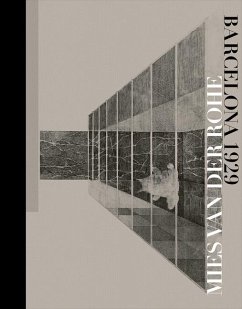The expert contributors to this lavishly illustrated volume, devoted entirely to Mies van der Rohe's Barcelona Pavilion of 1929, address here for the first time the forgotten contexts of the Pavilion's genesis. Habitually thought of as an abstract, unpolluted, and splendidly isolated building - a precursor of Mies's American period - the Pavilion is revealed here as a thoroughly European work, perhaps less pristine but more authentic. Mies and Lilly Reich were commissioned to design not only the Pavilion but also more than one hundred thousand square feet of German stands spread throughout the Exposition. By examining that work in addition to the Pavilion itself, the contributors present a far-reaching reinterpretation of the whole. They also explore connections with the mass media, highlight the work's antecedents and meaning in the history of architecture, and analyze the current pavilion, a reconstruction of the original built in 1986. No other critical study offers a comparable overview of Mies's work in Barcelona.








